

6th IEEE International Conference on Cloud Computing and Artificial Intelligence: Technologies and Applications
November 21-23, 2023, Marrakesh - Morocco
Hybrid Conference
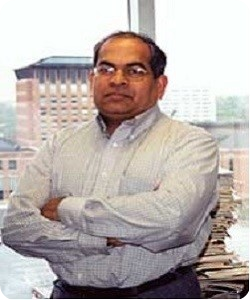
The Ohio State University
Title :
Designing Middleware for HPC and AI in Hybrid Clouds:
Challenges and Opportunities
The field of computing has been evolving over the years with the needs for High-Performance Computing (HPC), Deep Learning (DL), Machine Learning (ML) on heterogenous architectures. The modern computing environments are being spread over edges to clouds/HPC centers. This talk will focus on challenges and opportunities on designing HPC and AI middleware on these systems with both scale-up and scale-out strategies. The first part of the talk will focus two broad approaches/solutions to address these challenges: 1) High-Performance MVAPICH, DL/ML, and Bigdata software for the on-premise clusters as well as three major cloud providers (Azure, AWS, and Oracle) and 2) E4S-based framework to run unified versions in hybrid cloud environment. Next, we will provide an Overview of the new NSF-AI Institute (ICICLE, http://icicle.ai)for developing next-generation cyberinfrastructure for computing continuum (edges to clouds/HPC centers). Finally, we will show examples of how middleware can be designed to run applications from the Digital Agriculture area (one of the use-inspired science cases in the ICICLE institute) to run from edges to clouds.
Short Bio :
DK Panda is a Professor and University Distinguished Scholar of Computer Science and Engineering at the Ohio State University. He has published over 500 papers in high-end computing and networking. The MVAPICH2 (High Performance MPI and PGAS over InfiniBand, Omni-Path, Slingshot, iWARP and RoCE) libraries, designed and developed by his research group (http://mvapich.cse.ohio-state.edu), are currently being used by more than 3,300 organizations worldwide (in 90 countries). More than 1.65M downloads of this software have taken place from the project's site. This software is empowering several InfiniBand clusters (including the 7th, 19th, 34th, and 46th ranked ones) in the TOP500 list. MPI-driven solutions for providing high-performance and scalable deep learning for TensorFlow and PyTorch frameworks are available from http://hidl.cse.ohio-state.edu. Solutions to accelerate Big Data applications are available from http://hibd.cse.ohio-state.edu. Prof. Panda leads one of the recently funded NSF AI Institutes – ICICLE (https://icicle.osu.edu) to design intelligent cyberinfrastructure for next-generation systems. Prof. Panda is an IEEE Fellow and a recipient of the 2022 IEEE Charles Babbage Award. More details about Prof. Panda are available at http://www.cse.ohio-state.edu/~panda.
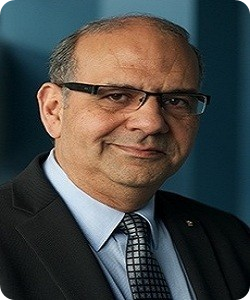
IEEE Fellow and Professor
George Washington University
Title :
The Convergence of Big Data, HPC, Cloud, AI, and IoT
TBA.
Short Bio :
Tarek El Ghazawi is a Professor in the Department of Electrical and Computer Engineering at The George Washington University, where he leads the university-wide Strategic Academic Program in High- Performance Computing. He is the founding director of The GW Institute for Massively Parallel Applications and Computing Technologies (IMPACT) and was a founding Co-Director of the NSF Industry/University Center for High-Performance Reconfigurable Computing (CHREC). El-Ghazawi’s interests include high-performance computing, computer architectures, reconfigurable and embedded computing, nanophontonic based computing. He is one of the principal co-authors of the UPC parallel programming language. At present he is leading and co-leading efforts for Post-Moore’s Law processors including analog, nanophotonic and neuromorphic computing. Professor El-Ghazawi is a Fellow of the IEEE and selected as a Research Faculty Fellow of the IBM Center for Advanced Studies and a UK Royal Academy of Engineering Distinguished Visiting Fellow and a Distinguished Visiting Speaker for the IEEE Computer Society. He was awarded the Alexander von Humboldt Research Award, from the Humboldt Foundation in Germany, the Alexander Schwarzkopf Prize for Technical Innovation, The IEEE Outstanding Leadership Award by the IEEE Technical Committee on Scalable Computing, and the GW SEAS Distinguished Researcher Award. El-Ghazawi has served as a senior U.S. Fulbright Scholar.
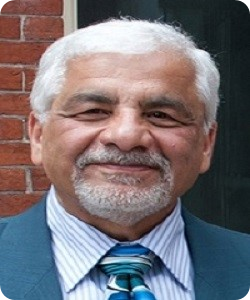
DL, MBA, M. Comp. Sc., Author, Educator
President, TelNet Management Consulting, Inc.
IEEE ComSoc North America Board Director and BoG member
Title :
Advancing 5G Technology Innovations into the 6G Era
5G represents a major departure from previous cellular generations. It will not only focus on speed, lower latency and spectrum efficiency but will also empower several verticals empowered by IoT, AI collecting and aggregating data for edge computing.
Moving into 6G, one of the key pursuits is support by AI bringing intelligence to the edge cloud performing analysis and generating insightful information and enable ubiquitous computing to empower future use cases and applications.
We’ll take a broader view as to the trends of collaborative technologies and impact on ecosystems and networking solution highlighting roadmap and applications and use cases.
Specifically, the talk will cover:
A clear understanding of 5G & 6G positioning, features and roadmap.
Architecture evolution pushing intelligence to the edge.
Examples empowered by 5G/6G, IoT and AI including Enhanced Mobile Services, Massive Machine-type Communications and Ultra-reliable and low latency communications.
Use of network slicing for bandwidth efficiency, security and QoS.
Takeaways:
Collaborative technologies and impact on ecosystems and networking smart solutions.
Opportunity to participate and drive advancement of IEEE transdisciplinary framework and Future Networks Technology Roadmap (INGR) working groups.
Short Bio :
Fawzi is currently the founder and president of TelNet Management Consulting Inc. offering international professional services in the areas of technology trends; positioning and building smart networking ecosystem solutions in key markets. Prior, Fawzi held various executive and leadership positions with Tier 1 companies in the areas of communications and networking in Canada and US. He championed the development of Telecom Network Management systems, led efforts in rolling out product releases for network edge and core and marketing SoC product line and roadmap.
Fawzi is a distinguished Lecturer and keynote speaker at several national and international conferences and events. He has several publications, co-authored a book “Collaborative Internet of Things for Future Smart Connected Life and Business” published by Wiley. Fawzi is a Co-founder of “IoT in Healthcare ConsortiumÔ” of Intelligent Health Association (IHA) and is a faculty advisor with Texas State school of Engineering with Capstone Senior Design program.
As a volunteer with IEEE and for the last few years, Fawzi has been the Director for IEEE Communications Society North America region and ComSoc BoG member. He is a voting member of IEEE Conference Committee, FNTC SC Chair elect, Co-Chair of Future Network Education working group, Co-Chair of IEEE SA Transdisciplinary Framework working group and contributor to Future Network Roadmap’s security, application and services working groups. Fawzi chaired several conferences, summits, workshops and panels, among the most recent is the General Chair of IEEE WCNC 2022. Among other positions held, Fawzi was the IEEE Region5 Conference Committee Chair IEEE Central Texas Section Chair. He chairs multiple joint chapters on Communications, Signal Processing, Computer, EMBS and Consumer Technology. Fawzi received multiple awards including IEEE USA professional leadership award; IEEE Communications Society NAB Exceptional Service Award (2020 and 2021); IEEE Leadership Section Chair for Central Texas Section (2017-2018); IEEE ComSoc Chapter of the Year and Chapter Achievement Awards (2015, 2017, 2020); MGA Regional outstanding Member Award (2013, 2014 and 2015) and Freescale CEO Diamond Chip Award (2008).
Fawzi has MBA, Master’s in Computer Science, Bachelor’s in Science with Honors in Mathematics with Distinction.
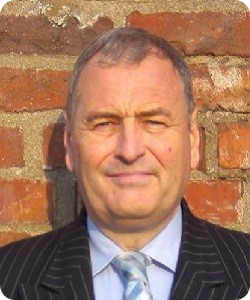
Director at Glencroft Ltd, Lavenham Suffolk, UK
Title :
- Post Quantum Cryptography in Africa
- Developing an African Quantum Education Programme
- Post Quantum Cryptography in Africa
Quantum Computing threatens the security of most secure communications systems by offering accelerated discovery of keys in existing asymmetrical or public key encryption mechanisms. Most traffic will continue to be carried on existing optical fibres or by radio communication but using quantum secure encryption. The key to making this work will be Quantum Key Exchange which is believed to be provably secure. One to one key exchange may be done using either a technique called Discrete Variable (DV) methods or Continuous Variable (CV) methods or using Entanglement . Optical fibres need for repeaters limit the extent that terrestrial key exchange can be achieved to less than 200 km, (the PLOB Bound) as conventional repeaters do not pass entanglement. This makes the choice of satellites as the transmission medium of choice for Quantum Key Exchange in global networks. Reception and transmission in mountainous areas may be difficult. Use of multidimensional qubits achieves substantial key rate speed-up over single channels. As Entanglement works over DWDM very substantial key rates may be achieved using all 132 channels in terrestrial networks. Advances in development of Quantum Memories will allow the deployment of quantum repeaters. Once the keys for Symmetric Post Quantum Encryption have been established then Global Secure Internets may be established. Identification of the all the bodies involved in a transition to use of Post Quantum Encryption systems is a challenging task for countries in Africa.
- Developing an African Quantum Education Programme
Reasons to develop an African Quantum Education programme include; building up the number of people in Africa familiar with the technology; To provide background to government figures for decision making’ To provide informed educated manpower to Telcos throughout Africa. Scattering people with a grasp of the technologies as individual researchers in underfunded labs around the continent will fail as an approach. Far more useful will be to concentrate researchers and teachers in a half dozen clusters around the continent. The PLOB bound restricts the usable range for entanglement transmission on optical fibre to roughly 150 km. This means that an African Quantum Internet will need to be implemented on a constellation of satellites in polar orbits. The ESA HydRON vision aims to bring optical communication technologies to maturity for a wide range of satcom services. The vision encompasses the provision of high-capacity data transport and flexible network services by connecting space and ground assets via an optical network. Quantum Computers may be Near Absolute Zero machines, Ambient temperature machines. The closed cycle dilution refrigerator has been one of the competitive space cryogenic technologies for obtaining the sub-Kelvin temperature with the advantages of large cooling capacity, continuous refrigeration and the absence of magnetic field interference. It's fitting that one of the coolest quantum computing projects going has an equally cool name. Goldeneye is IBM's internal codename for the world's largest dilution refrigerator, which will house a future 1,000,000 qubit quantum processor. IBM will focus on in its rollout of Q Africa to Ethiopia, Ghana, Kenya, Nigeria, Rwanda, Senegal, South Africa, Tanzania and Uganda. Assefa sees other potential research and use-cases for Q Africa in financial sectors, mining and natural resources management. Syllabuses may be imported from exiting Universities and many make their lecture notes available. A ten year timeline covers the evolution from today's NISQ machines to fully fault tolerant large scale quantum machines. Research will focus on Quantum Algorithms, Distributed Quantum Algorithms, Modelling of Networks, Satellite Constellation Design, Post Quantum Cryptography, and future prospects of Applied Quantum Computing. A National and Continent wide programme will be needed to develop a pipeline of students and educators to support national and continental development.
Short Bio :
Frank Domoney BSc MSc PG Dip(Economics) is a Big Data, Deep Learning, GPU and Quantum Computing Evangelist and actively promotes the use of the technologies where appropriate. He is familiar with Virtualisation and Cybersecurity Issues and has a role as a Skill Transfer Engineer specialising in Technology Evolution and Economic Development and integration with EU programmes.
After a thirty year career building Fixed, Mobile and Converged Telecommunications Networks for Vodafone, Three and BT in UK, Germany, France, Kosovo, Moscow and Egypt he saw the massive disruption introduced by Big Data, Blockchain, High Performance and Quantum Computing and Modern Manufacturing, in both technology and business and how they enable Smart Cities and Smart Factories and offer enormous opportunity to people in the Developing World.
He has learned over his career that Engineers need to reinvent themselves every eight to ten years. He is learning Artificial Intelligence Techniques and Quantum Computing and exploring their application to Africa Scale Problems. He is working with his Arabic Teacher to develop a vocabulary and syllabus to teach to people in Palestine and the Levant.
He was responsible for redesign of Fixed, Mobile, Data and Post Office Networks in Kosovo, and was Telecommunications Design Authority for the Red Sea resort of Port Ghalib and its thousands of hotels, villas, apartments and shops. He worked on rationalisation of four networks in Moscow and Master-planning of city districts in Saudi Arabia and UAE including Smart Buildings while in Dubai.
Since then he has studied NoSQL Databases, Graph Databases and Processing, Cluster Engineering, Stream Processing and SMACK architecture while registered as a PhD student.
Frank is helping to develop a Masters Degree in High Performance and Quantum Computing with one of the professors at Cadi Ayyad University in Marrakech. He is using his experience in the innovation cluster in Cambridge UK to introduce entrepreneurial activity in Morocco.
Frank has presented to the Moroccan Cyber Security Camp at ENSIAS. Deep Learning and Machine Intelligence can be applied to Cybersecurity very effectively. Post Quantum Cryptography will have global impact. He is actively investigating Digital Twinning, for factories and cities. He is actively investigating how Business Processing Modelling can be extended to Industrie 4.0.
Frank has learned ten languages in his lifetime but sadly is still only fluent in six. He has a passion for the reconstruction and transformation of North Africa Middle East and their integration in the EU economy. He has a great interest in the history of the Thirty Years War in Europe.
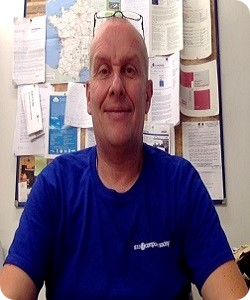
Laboratoire d'Informatique de Paris Nord [LIPN].
University of Paris XIII.
Title :
Where to put efforts for the flexibility and elasticity of HPC intrastructures in the Cloud?
In this presentation, we investigate the general problem of the convergence of Cloud and HPC infrastructures. We adopt mainly a System point of view. This assumption means we investigate the organization of cloud orchestrators and job schedulers. The purpose is to decide if we put the layers of one system on top of the other or if it is better to interleave layers of each system. The objective is to propose a new cloud/HPC system with more desirable properties, among them flexibility for the user and elasticity. We first show some algorithms for the cloud orchestrator to schedule containerized jobs, particularly multicriteria algorithms. We also discuss experimental results with the K3s and MicroK8s systems, two popular frameworks for working at the edge. Then, we switch to another vital question: How and why does the containerization of HPC job schedulers introduce good properties, such as elasticity. Again, we show experimental results to convince the audience of the approach's potential. For instance, the work can serve as a building block to deploy in your national HPC infrastructure, the infrastructure you had ten years ago, to replay the experiments you made ten years ago (reproducibility issues). Ultimately, our subject on the convergence of Cloud and HPC is similar to the dispute between the Ancients and the Moderns. This polemic originated at the Académie française and stirred up the literary and artistic world of the late 17th century. However, in the end, where are the moderns, and where are the ancients?
Short Bio :
Christophe Cérin has been a Professor of Computer Science at the Sorbonne Paris Nord University (formerly University of Paris 13), France, since 2005. His research interests are in high-performance computing, including grid, cloud, and edge computing. He is developing middleware, algorithms, tools, and methods for managing distributed systems. He is an IEEE Member. Award Recipient of the 2020 IEEE Technical Committee on Cloud Computing Research Innovation Award. Editorial Board Member of IEEE Transactions on Computers (IEEE TC). Associate Editor for Springer Journal of Cloud Computing. From September 2021, he will be joining Grenoble University for works (Délégation CNRS) connected with those realized in the frameworks of the Edge Intelligence research program and Datamove project. His recent industrial experience includes serving as local chair for the FogSLA project (Nokia, Smile, CGI, Gandi, Sorbonne université, Paris 13) on Fog orchestration. His past industrial project was with the Wolphin project as well as for the Wendelin project related to Cloud and Big-Data, and also with the Resilience project related to Cloud Computing.
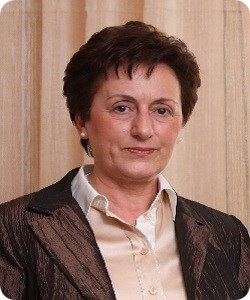
Professor Emeritus
Department of Informatics
Aristotle University of Thessaloniki, Greece
Title :
Effective Scheduling of Real-time Applications in Cloud, Fog and Mist Computing Infrastructures
State of the Art and Research Challenges
Due to the recent growth of the Internet of Things (IoT) technology and applications, Cloud computing is not efficient for transferring the huge volume of data generated by IoT devices. The vast amount of these data typically requires processing in a real-time way. As a result, Fog and Mist computing have been established as computing paradigms to cope with problems related to network bandwidth, transmission latency and security. The majority of the IoT applications are deadline-constrained and the goal is to ensure that all deadlines are met. Therefore, it is necessary to employ effective scheduling strategies, in order to fully exploit the capabilities of cloud, fog and mist computing systems and to achieve the required Quality of Service (QoS) level.
In this talk we will present novel techniques to explore challenges in resource allocation and scheduling of time-dependent applications in cloud, fog and mist computing environments. Future trends and directions in this research area will be also provided.
Short Bio :
Helen D. Karatza (senior member of IEEE, ACM, SCS) is a Professor Emeritus in the Department of Informatics at the Aristotle University of Thessaloniki, Greece. Dr. Karatza's research interests include cloud, fog and mist computing, energy efficiency, fault tolerance, resource allocation, scheduling algorithms and real-time distributed systems. Dr. Karatza has authored or co-authored over 250 technical papers and book chapters including seven papers that earned best paper awards at international conferences. She served as an elected member of the Board of Directors at Large of the Society for Modeling and Simulation International. She served as chair and keynote speaker in international conferences. Dr. Karatza is Senior Associate Editor of the Elsevier journal “Simulation Modelling Practice and Theory”, an Editor of “Future Generation Computer Systems” of Elsevier, an Associate Editor of IEEE Transactions on Services Computing and an Editorial Board member of Cluster Computing of Springer. She was Editor-in-Chief of the Elsevier journal “Simulation Modelling Practice and Theory”, Editor-in-Chief of “Simulation Transactions of The Society for Modeling and Simulation International”, Associate Editor of “ACM Transactions on Modeling and Computer Simulation” and Senior Associate Editor of the “Journal of Systems and Software” of Elsevier. She served as Guest Editor of Special Issues in several international journals. More info about her activities and publications can be found at: https://users.auth.gr/karatza/.
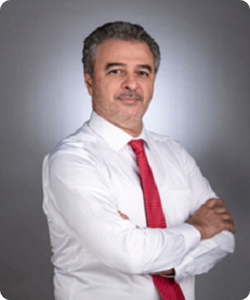
TEXAS A&M UNIVERSITY AT QATAR
Title :
High Performance Computing and AI in radiotherapy and medical imaging
In the field of radiation therapy, Monte Carlo simulations are used to reconstruct the energy deposition due to radiation therapy dose. Advanced anatomically correct 4D computational heart phantom are used as an input to reconstruct realistic RT treatment planning and to measure the voxel-wise dose for different organs. In order to simulate the different tissues, specific phantoms are used to represent the density of each tissue. Experimental measurements were compared to the simulation data. In the field of medical imaging our group is actively involved in designs of new positron emission tomography (PET) scanners. PET is a non-invasive imaging modality used mainly in oncology, radiology and neurology to assess functional changes in different areas of the body. A radiotracer consisting of a tracer coupled to a radionuclide (positron emitter) is administered to the patient to examine physiological functions of their body. Pairs of 511 keV photons will be emitted following the positron-electron annihilation and detected by the scintillation crystals arranged in rectangular blocks and positioned in a cylindrical gantry. Considered as the main building blocks of a PET scanner, the scintillation crystals absorb the high energy photons and convert them into optical photons. In this work, we use Monte Carlo methods to simulate a clinical PET scanner investigate and optimize the performances of new scanners. We will summarize ongoing activities and will show how AI tools coupled to MC simulation are used to enhance imaging capabilities and optimize the treatment.
Short Bio :
Dr. Othmane Bouhali graduated of the Université Libre de Bruxelles where he contributed to the experimental and scientific program of the Large Hadron Collider at the European Organization for Nuclear Research (CERN). He is a research professor and director of research computing at Texas A&M University in Qatar where he established the high energy and medical physics group. His team is conducting Monte Carlo modelling in the fields of PET, CT and CBCT in addition to dose optimization in radiation therapy treatments. He is also the founder and director of the Texas A&M University Advanced Scientific Omputing center.
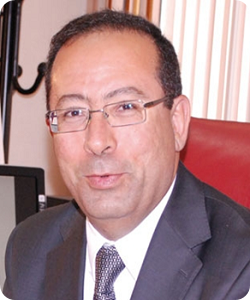
Mohammed V University in Rabat, Morocco
Title :
Legal aspects of cybersecurity and cloud computing
TBA
Short Bio :
TBA
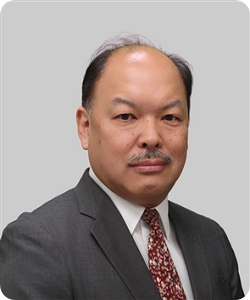
School of Computer Science, Tokyo University of Technology, Japan
Title :
Logical IoT Cloud - Integrated Systems Management for Cloud and IoT
Cloud has been adopted for many production systems and becomes a common IT infrastructure for production systems. IoT applications provide services based on sensors and actuators that are interconnected between cyber and physical spaces. Integrated systems management for Cloud and IoT is required to manage IoT resources as well as CPU, Memory, Storage and Network. Systems management for IoT resources needs to support the same level as ordinary cloud resources. This presentation gives the integrated systems management for Cloud and IoT called Logical IoT Cloud (LIC). LIC enables Logical Sensors (LSs) with multiple virtual sensors and Logical Actuators (LAs) with multiple virtual actuators. They can be acted as the same functions as physical sensors and actuators on cloud native environments. LIC can support multiple IoT applications that require to receive sensor data and send physical actuators the control commands for production usages.
Short Bio :
Takayuki Kushida is professor and leads Cloud and Distributed Systems Laboratory in Tokyo University of Technology (TUT). Before he joined TUT, he was in IBM Research, Tokyo Research Laboratory as a senior research staff and pursued many research projects in distributed computing technology. He was the technical staff in IBM Research HQ, NY, USA, and worked on supporting IBM research technical strategy for worldwide research laboratories. He was also a principal cloud solution architect in IBM Global Technology Services (GTS), Bangalore, India as an international assignment. He made many cloud technical solutions and reviewed them for business solutions as a senior technical leader. In the academic community, he was director, Information Processing Society of Japan (IPSJ) and executed the strategy and operation in the organization. He was also editor in chief for IPSJ Journal. He is IPSJ Fellow for his research contributions to distributed systems and cloud.